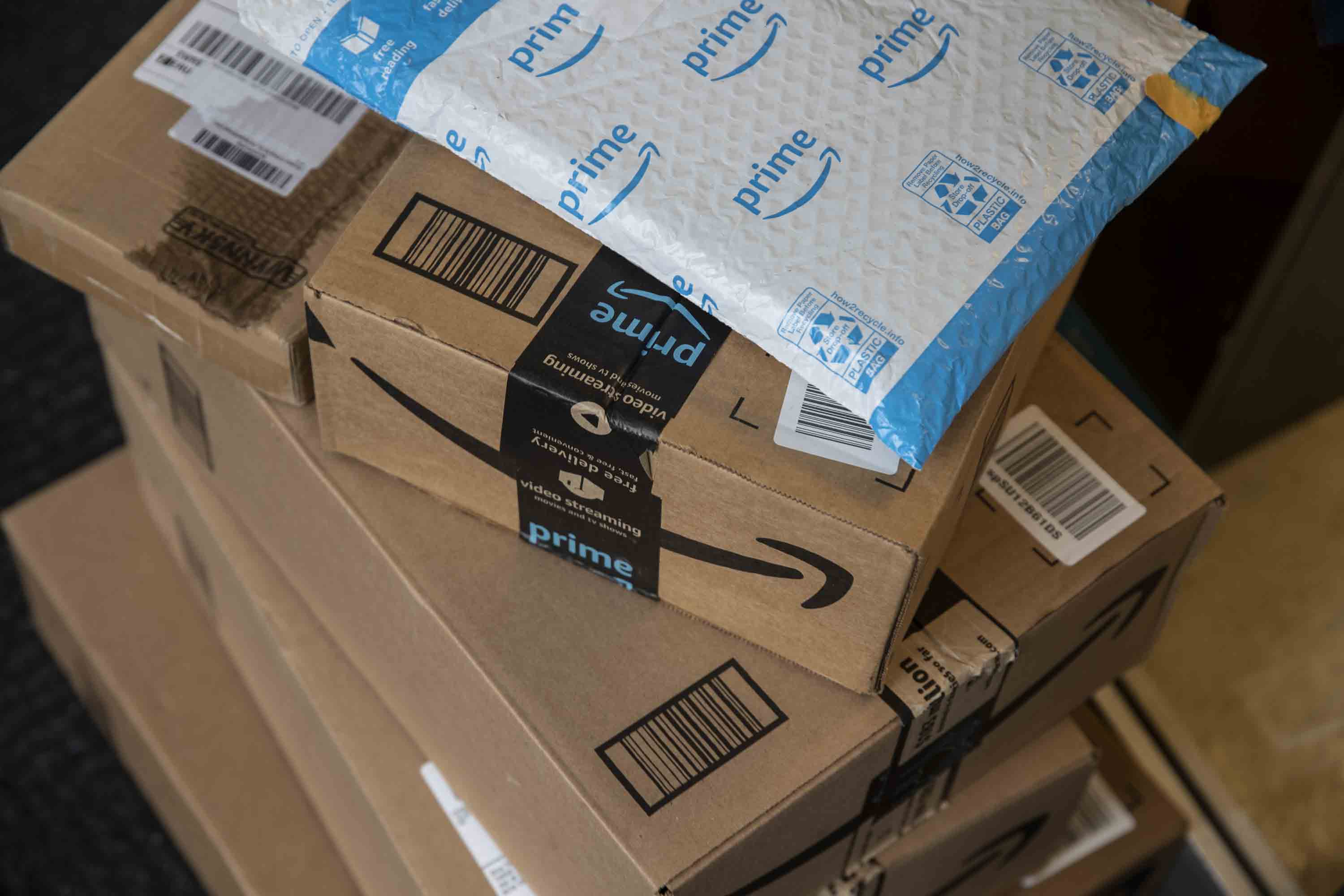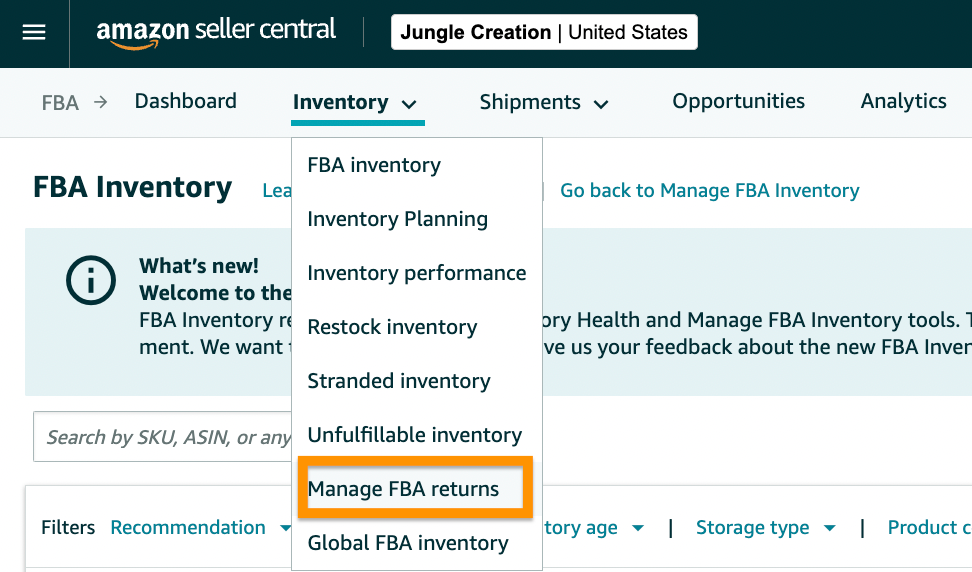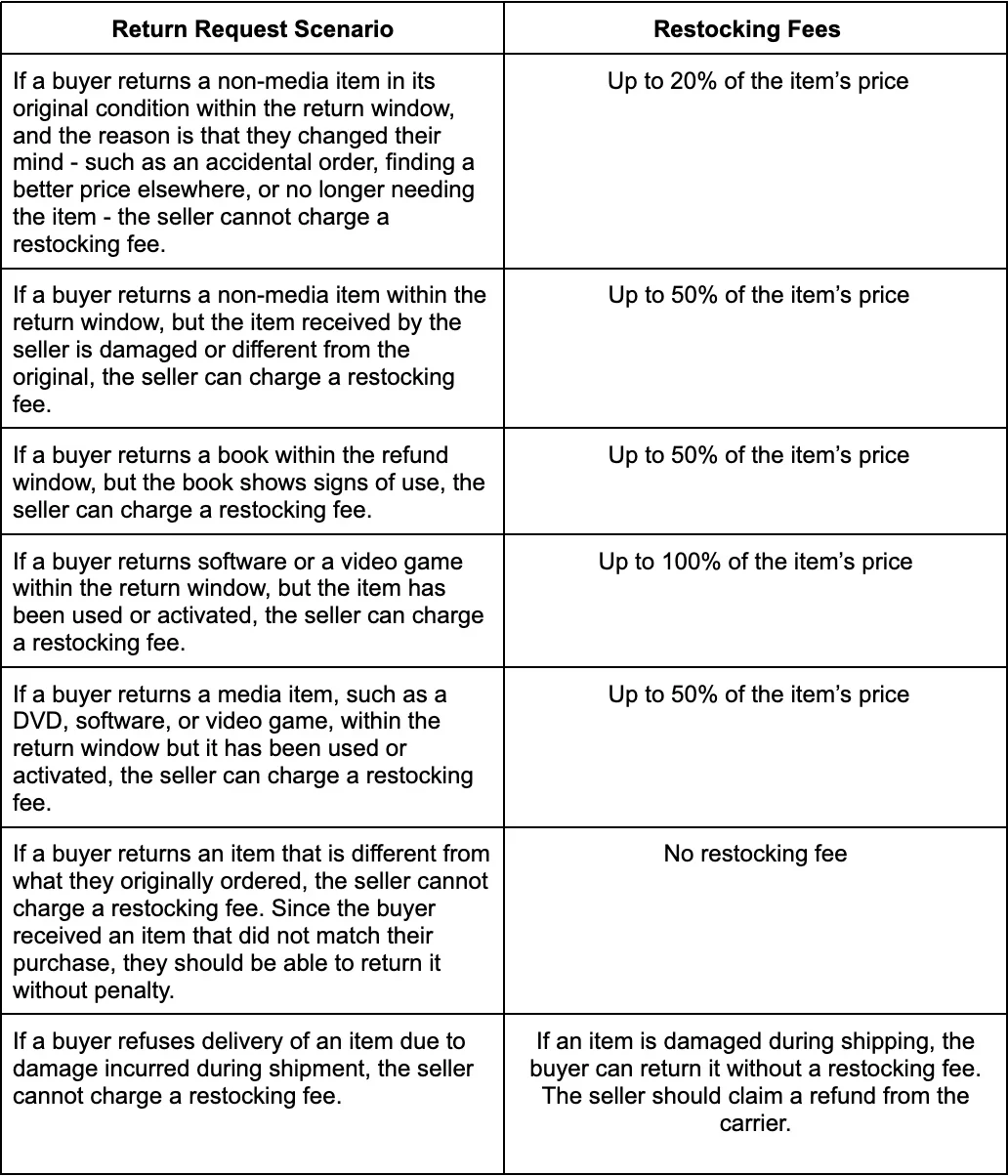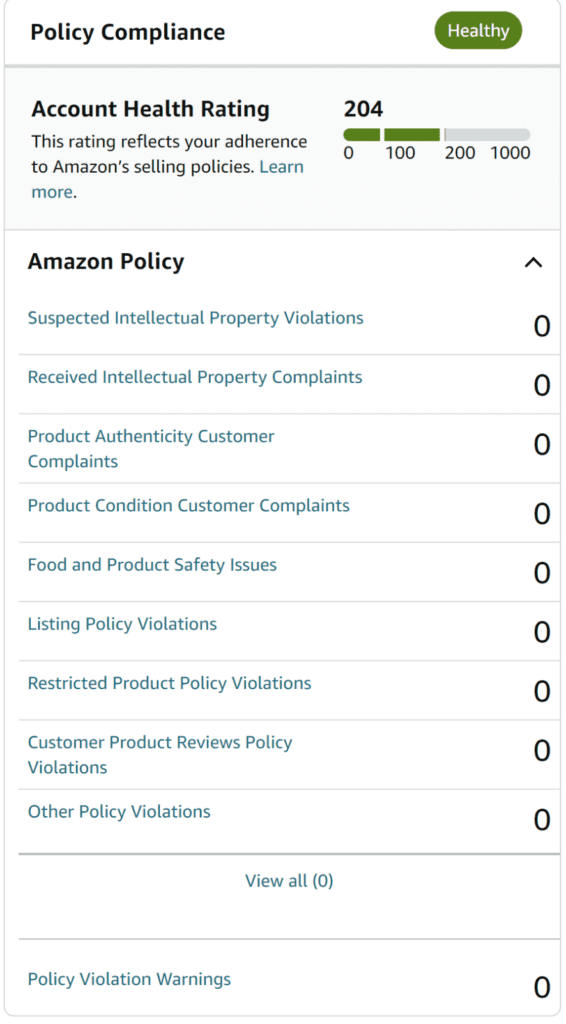PRIVATE LABEL SHIFU BLOGS
Ready to dive into more exciting content? Explore our latest blogs now!

Amazon’s 2024 Return Policy Updates for Sellers
“Success is best when it’s shared.” – Howard Schultz
Whether you’re a new seller or the owner of a large eCommerce brand, dealing with returns is simply part of the business. When a return request comes through, it’s never ideal—it not only impacts your sales but also indicates that a customer wasn’t completely satisfied.
While returns are a reality of selling on Amazon, they don’t need to cause stress.
In this article, we’ll break down Amazon’s return policy, including recent updates and how they impact sellers. We’ll also cover effective strategies for managing and reducing returns, so you can build a loyal, satisfied customer base while protecting your bottom line.
Amazon FBA Return Policy
Through Fulfillment by Amazon (FBA), Amazon manages order fulfillment and customer service, including handling returns on behalf of sellers. Amazon applies its own return guidelines, meaning that sellers don’t have a say in whether a product is accepted for return, even if the issue with the item is due to buyer error or misuse.

Generally, customers have 30 days from the date of delivery to request a return. However, Amazon may approve returns beyond this 30-day window on a case-by-case basis.
When a buyer initiates a return, they send the item back to Amazon, which then notifies the seller via email and deducts the order amount from the seller’s account balance.
What happens after the returned item reaches Amazon’s warehouse?
When Amazon receives a returned item, they assess its condition to determine if it can be resold.
Damaged
If the item is damaged or not in a sellable state, Amazon checks to identify who caused the damage—either Amazon during fulfillment or the customer.

Customer’s responsibility: If the customer or shipping carrier caused the damage, Amazon won’t provide a reimbursement, and the product will be marked as “unsellable.”
Amazon’s responsibility: If Amazon caused the damage, they’ll reimburse you for the product’s return.
Unused
If the product is unused and still in new condition, Amazon will add it back to your inventory to fulfill future orders.

For products classified as "Defective" or "Customer Damaged," sellers must submit a removal order within 30 days of the item’s return to Amazon's fulfillment center. You also have the option to set up automatic returns or disposal of unsellable inventory through Seller Central.
Updated FBA Inventory Evaluation Settings
In May 2024, Amazon introduced new options in Seller Central that allow sellers to adjust their FBA inventory evaluation settings.

Previously, when a product was returned, an Amazon staff member would inspect it to determine whether it was fit for resale.
If the item was undamaged, it would be returned to inventory. If it was damaged, sellers could be eligible for reimbursement. However, this process wasn't always reliable, as sometimes damaged items were mistakenly restocked, resulting in poor customer experiences and negative feedback.
With the new update, sellers now have the option to enable or disable returns evaluation, or apply it selectively to certain ASINs.
To find this page, navigate to Settings in Seller Central > Fulfillment by Amazon > FBA Inventory Evaluation Settings.
This update is especially helpful for sellers dealing with frequent damaged returns or selling products with complex components or electronics. By receiving returns directly instead of Amazon, you gain the opportunity to inspect and assess the condition of your own products.
What happens if the customer fails to return the product?
If the customer doesn't return the product to an Amazon fulfillment center within 45 days of receiving it, Amazon will charge the customer again (if they had already been refunded) and reimburse the seller for the item.

In most cases, Amazon automatically processes the reimbursement after 45 days. However, in rare situations, you may need to open a support case to request the reimbursement.
Extended Return Period
For items in the Baby category, Amazon allows customers to return eligible products in new, unopened condition within 90 days. Any opened or used products are not eligible for return under this extended period. Amazon covers the return shipping costs at no charge to the seller.

2024 Returns Processing Fee Update:
On June 1, 2024, Amazon will introduce a returns processing fee for products with high return rates across most categories, excluding apparel and shoes. This fee is designed to help cover the operational costs of handling returns and reduce waste.

Amazon explains:
“The fee will apply only to products that exceed a category-specific return rate threshold.”
The return rate for your product will be calculated as the percentage of shipped units returned within the month of shipment and the subsequent two months. For example, if units are shipped in June 2024, the return rate will be calculated based on the returns from June, July, and August 2024. The returns processing fee will be charged for each unit returned that exceeds the return rate threshold for that category. Charges will be applied to your account between the 7th and 15th of the third month following shipment. For instance, for units shipped in June 2024, the fee will be charged between September 7th and 15th, 2024.
Starting May 1, 2024, sellers will be able to track their return rates and thresholds in the FBA Returns dashboard, which will be updated week

Amazon FBA Return Insights Tool
Amazon launched a new tool in March 2023 called “Return Insights” under the Manage FBA Inventory section, which gives sellers detailed information about their returns.

With this feature, sellers can view return trends by Return Rate % or Returned Units, and filter results by timeframes (30/60/180 days or the past year) and product categories. The tool also provides breakdowns for each ASIN, including the most common reason for returns.

This update is significant as it allows sellers to identify their top-returned ASINs and the reasons behind the returns. By understanding these patterns, sellers can optimize product listings or improve product quality to reduce returns.
To access Return Insights, go to "Manage FBA Inventory" > "Manage FBA Returns" in Seller Central.
Amazon FBM Return Policy
For sellers who handle their own order fulfillment (FBM), the return process differs slightly from FBA. According to Amazon’s seller-fulfilled return policy, FBM sellers are required to adhere to or exceed Amazon’s standard return policy. This means you must accept returns within Amazon's 30-day return window.
Returns will be sent to the address provided in your seller account, not to Amazon. You must issue a refund to the customer within 2 days of receiving the returned item.

Professional sellers on Amazon are automatically enrolled in the Amazon Prepaid Returns Label program. If a customer requests a return within the acceptable return window, Amazon will provide them with a prepaid return shipping label through Buy Shipping Services on your behalf.
If a return request falls outside the return policy or is exempt, Amazon will forward the request to you for manual review.
For FBM sellers, this means you won’t have the opportunity to communicate with the customer and attempt to resolve the issue before the customer is automatically refunded.
What happens if a customer returns an item outside of Amazon's return policy?
In some situations, Amazon allows sellers to apply a restocking fee when an item is returned. This fee is calculated as a percentage of the item's price (excluding shipping), and it depends on the condition of the returned product.
As a seller, if you choose to accept a return beyond the 30-day window or if the returned item is used, damaged, defective, or not as described, you may impose a restocking fee.
However, if the item is returned in its original condition and within the designated return period, a restocking fee cannot be charged.
Here’s a breakdown of which return requests may be subject to restocking fees:

Understanding Amazon's Return Reasons and Responsibilities
When a customer requests to return an item on Amazon, they must specify the reason for the return. This helps determine whether the customer or the seller is responsible for covering the return shipping costs.
Amazon provides 72 official return reasons, which can be reviewed here. In general, customers are responsible for returns related to personal preferences, ordering errors, or a change of mind. On the other hand, sellers are responsible for returns tied to issues like product defects or damages, such as "damaged due to poor packaging" or "missing parts."

Here are some common return reasons and the corresponding party responsible:
"Did not like color" – Customer
"Better price available" – Customer
"Not satisfied with the quality" – Seller
"Arrived too late" – Seller
Why Are Customers Returning Your Products?
Returns are inevitable when running an eCommerce business, but it’s crucial to monitor why customers are sending products back. This is especially important for private label items, as identifying recurring issues early on allows you to address them promptly.

If there are multiple complaints about defects or quality, Amazon may suspend your listing until the problem is resolved. For example, if customers are frequently dissatisfied with the fit or size of a bicycle helmet, your listing could be suspended, or in some cases, your seller account might be at risk.
To avoid a flood of negative reviews, take action quickly. If you have unsellable inventory, you can initiate a removal order to have the items returned to you for inspection.
How to Identify Why Customers Are Returning Products
To understand why customers are returning your products, you can check the Policy Compliance section in Seller Central.
Here's how to do it:
First, log in to Seller Central, click on the “Performance” tab, and select “Account Health.” In the Account Health section, you will find “Policy Compliance.”

For example, if your Account Health Rating is in the green, great! But if you see a complaint next to “Product Condition Customer Complaints,” you’ll need to investigate further. In this case, you might find that a product was reported as "Defective," and Amazon may have removed your listing.
To get your listing reinstated, you can appeal the decision by clicking on "Appeal" and submitting a plan of action explaining how you resolved the issue and the steps you’ve taken to prevent it from happening again.
To find detailed reasons for every return, go to the “Reports” tab in Seller Central, then click “Fulfillment.” On the left side of the screen, choose “Customer Concessions” and then “FBA customer returns.”
Here, you can generate a report showing all FBA returns within a specified date range, with details like Order ID, ASIN, FNSKU, return reason, and the status of the return. Pay close attention to the “Disposition,” “Customer Return Reason,” and “Status” columns, as they might contain specific notes about what was wrong with the product or why it was returned.
Monitoring returns carefully helps you address issues before they affect your listing or lead to negative customer reviews.
Understanding Returnless Refunds on Amazon
A returnless refund is a situation where Amazon decides not to ask the customer to return a product. This often happens when the item's value is low, the cost of return shipping is too high, or the product would be hard to resell after being returned.
While Amazon does not publicly disclose its exact price threshold for this decision, it's clear that processing returns can be costly and time-consuming, and in some cases, it's simply not worth it.

For sellers, returnless refunds can be a convenient option, especially when the product is defective or damaged during shipping. However, the main concern for sellers is that Amazon may issue a refund automatically without getting the seller's approval.
FBM sellers have the ability to set rules for returnless refunds in their Seller Central account under the “Return Settings” section. Here, they can configure parameters such as price range, product category, reason for return, and the return window.
Do Customers Take Advantage of Amazon’s Return Policy?
Amazon is known for its customer-friendly return policy, allowing returns for almost any reason within 30 days of purchase. While this approach is aimed at customer satisfaction, it can lead to some individuals abusing the system by attempting to get refunds on every item they buy.

The good news is that Amazon actively monitors such behavior and, if they detect misuse of the return policy, will ban customers from making future purchases.
What to Do with Your Returned Items
Amazon offers several programs to help sellers minimize losses from returned, damaged, or unsellable inventory. Here are your options:
FBA Donations
The FBA Donations program allows sellers to donate eligible inventory to charities in the U.S.
How it works: Sellers can donate their products through Amazon’s partner, Good360, which distributes items to nonprofits.
This environmentally friendly program reduces waste, helps get unwanted items to those in need, and may even offer tax benefits to sellers.
FBA Grade and Resell
With the FBA Grade and Resell program, sellers can relist unfulfillable returned products as used items, rather than paying Amazon to destroy or return them.
How it works: Submit your unfulfillable inventory, and Amazon will grade the items as Used – Like New, Used – Very Good, Used – Good, or Used – Acceptable. After grading, a new listing is created for your products.
This program offers a way to recoup losses from returned items by reselling them as used, reducing waste in the process.
FBA Liquidations
The FBA Liquidations program helps sellers liquidate excess or returned inventory instead of having it destroyed or paying for storage.
How it works: Submit a liquidation request in Seller Central, and Amazon evaluates your product's average selling price. Liquidators buy your inventory for 5% to 10% of the selling price, and Amazon pays you within 60 days.
This is an effective way to recover some funds from unsellable or used stock, instead of paying Amazon for returns or disposal.
How Amazon's Return Policy Impacts Your Business
Selling on Amazon comes with a set of rules that all sellers must follow—whether you agree with them or not. One of the most significant aspects to consider is Amazon’s return policy, which can affect your business in several ways.
Returns are inevitable in any e-commerce or retail business, and Amazon is no exception. Customers expect easy returns, and the platform ensures a straightforward process for them. However, as a seller, managing returns effectively is crucial for maintaining profitability and minimizing losses.

To reduce the number of returns, it’s essential to focus on delivering a high-quality product and ensuring your listings are fully optimized. This means providing accurate product descriptions, high-quality images, and any other relevant details that help set customer expectations. A well-crafted listing can prevent misunderstandings about your product, lowering the likelihood of returns. Additionally, ensuring that your products meet or exceed customer expectations can help you avoid negative feedback and potential listing suspensions due to frequent complaints.
In short, while returns are a natural part of running an Amazon business, being proactive in your product quality and listing optimization can help mitigate their impact on your bottom line.
Final Thoughts
Amazon’s updated return policy for 2024 brings important changes that can affect how you manage returns, customer service, and inventory.
Staying ahead of these changes is crucial for maintaining a smooth operation and protecting your business from unnecessary losses.
By understanding the new policy and adapting your processes accordingly, you can minimize the impact of returns and enhance your customer satisfaction.
Need help understanding how these changes affect your Amazon FBA business?
Book a Call with us today!
Let’s discuss tailored strategies to keep your business running smoothly and profitably!
GET THE LATEST NEWS
AND MEET AND SEE REAL CONVERSATIONS FROM OUR SUCCESSFUL MENTEES
⭐⭐⭐⭐⭐
Books Recommendation for Amazon Private Label
IF YOU ARE SERIOUS ABOUT TURNING YOUR LIFE INTO A NEW CHAPTER CLICK THE BUTTON BELOW TO APPLY FOR OUR DISCOVERY CALL
NO COMMITMENT REQUIRED IF YOU ARE NOT A GOOD FIT
DISCLAIMER: The sales figures stated anywhere on this funnel are individual sales figures and marketing results. Please understand that sales figures are not typical, and we are not implying that you will duplicate them. We have the benefit of doing online marketing for 4+ years, and have an established following as a result. The average person who simply purchases any “how-to” program may not follow through on what they are being taught and because of that we cannot guarantee any specific result. We are using these references for example purposes only. Sales figures will vary and depend on many factors including but not limited to background, experience, and work ethic. All business entails risk as well as massive and consistent effort and action. If you’re not willing to accept that, this is not for you.
>ABOUT THE STRATEGY SESSION: After completing an application, you will get the opportunity to schedule in a Strategy Session with a qualified person from our team. This is completely optional. The Session lasts about 45 minutes and if you do not want to work more closely with us, you can leave without buying anything. The Strategy Session to provide insights insights on the operations of your business and offer strategies for growth that you will be able to implement right away.
NOT FACEBOOK™: This site is not a part of the Facebook™ website or Facebook Inc. Additionally, This site is NOT endorsed by Facebook™ in any way. FACEBOOK™ is a trademark of FACEBOOK™, Inc. Hi! We use cookies, including third-party cookies, on this website to help operate our site and for analytics and advertising purposes. For more on how we use cookies and your cookie choices, go
here for our cookie policy!
@2024 AMZSHIFU.COM All Rights Reserved










